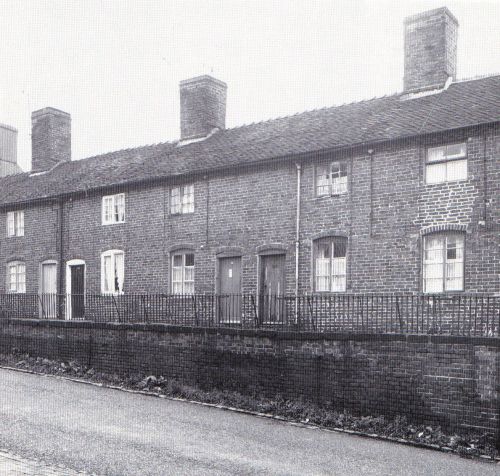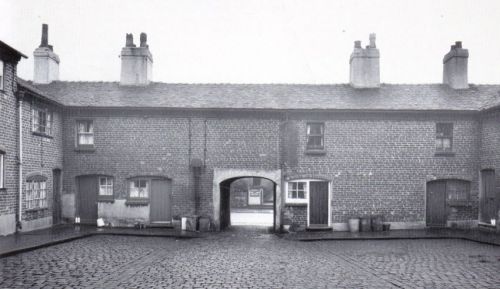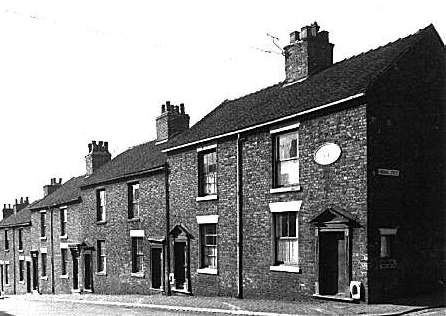- History
- Pottery
- Industry
Housing: The Workers
 At the same time he was building The Mount, Spode II was also investing in property of a different kind. He built houses of varying size and standards to accommodate the working classes. On one site he purchased five old houses, demolished them and built ten new structures. The location became known as Ten Row. The houses were two up and two down, each with a long garden to their rear and individual lavatories. These houses rented for eight shillings nine pence per month and must have been considered superior Spode's Penkhull Square housing. Those
At the same time he was building The Mount, Spode II was also investing in property of a different kind. He built houses of varying size and standards to accommodate the working classes. On one site he purchased five old houses, demolished them and built ten new structures. The location became known as Ten Row. The houses were two up and two down, each with a long garden to their rear and individual lavatories. These houses rented for eight shillings nine pence per month and must have been considered superior Spode's Penkhull Square housing. Those  twenty small cottages surrounded a central court accessed through an archway. They were also two up two down but with only one fullsize bedroom. The occupants shared a row of lavatories at the rear of the square. These houses rented for seven shillings a month.
twenty small cottages surrounded a central court accessed through an archway. They were also two up two down but with only one fullsize bedroom. The occupants shared a row of lavatories at the rear of the square. These houses rented for seven shillings a month.
From the very end of the eighteenth century  the most enlightened manufacturers encouraged workers to invest in building houses. “Building Clubs” established both a housing source for members and an investment for the working man. The clubs built rows of terraced houses in the potteries, some with fashionable detailing. Throughout the nineteenth century manufacturers, developers, and self-help groups built houses to accommodate Staffordshire's expanding workforce as it became the largest pottery-making district in the Western world.
the most enlightened manufacturers encouraged workers to invest in building houses. “Building Clubs” established both a housing source for members and an investment for the working man. The clubs built rows of terraced houses in the potteries, some with fashionable detailing. Throughout the nineteenth century manufacturers, developers, and self-help groups built houses to accommodate Staffordshire's expanding workforce as it became the largest pottery-making district in the Western world.
